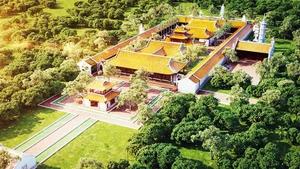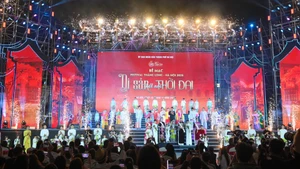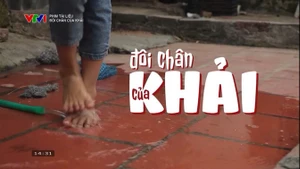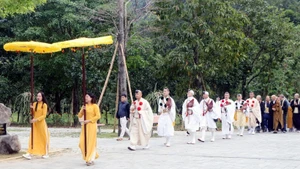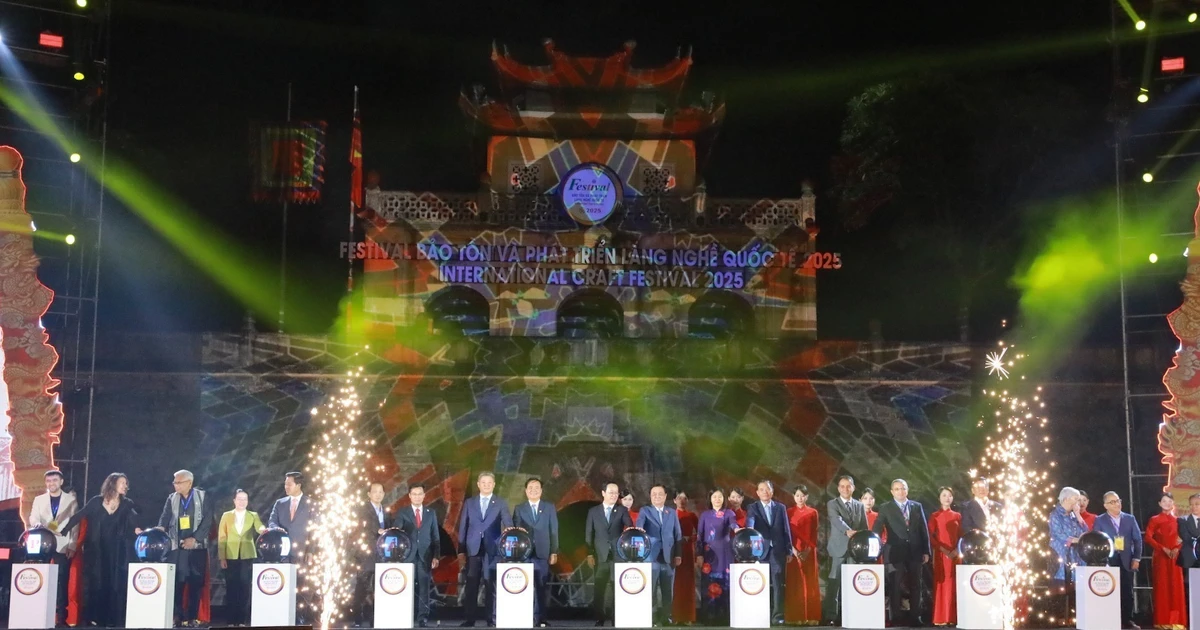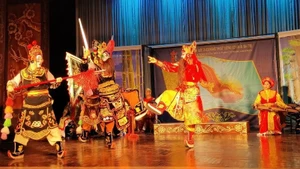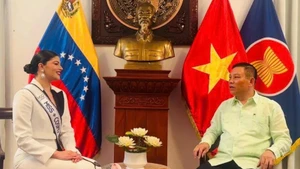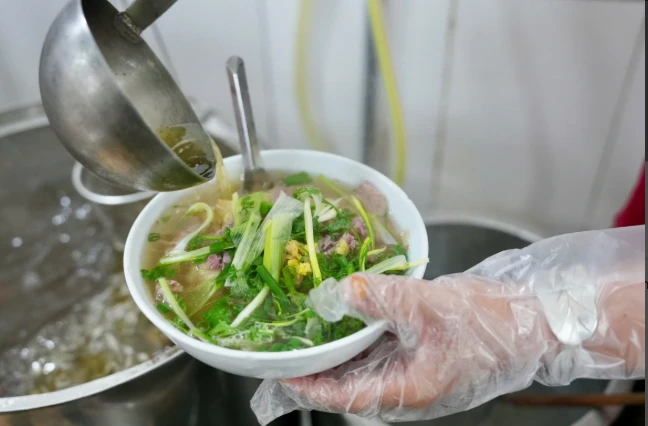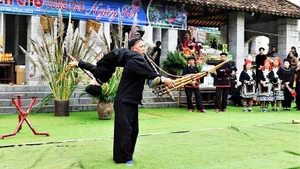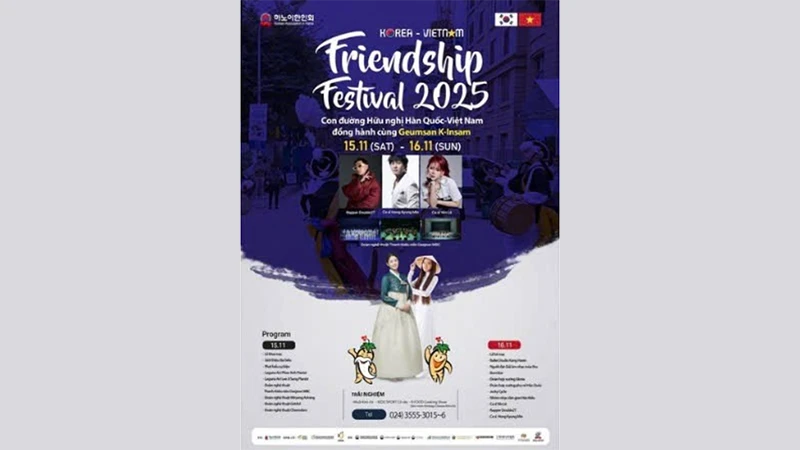In the mountainous area of Khanh Son District (former), Khanh Hoa Province, there are “singing stones”, which the Raglai simply call goong lu or khanh da, scientifically known as rhyolite. Long ago, the Raglai learned how to use the sounds produced by these stones to protect their fields and villages by arranging the stones along streams, attaching small hammers that struck the stones as the current flowed. The flowing water caused the hammers to hit the stones, producing sound. From this, the Raglai crafted the lithophone.
According to Mau Quoc Tien, a researcher of Raglai folk culture, as the “sacred soul” of the Raglai people, the lithophone is always performed first at important festivals of the Raglai.
Researchers note that the musical scale of the Khanh Son lithophone imitates the tonal range of folk melodies. Large, long, and thick stones produce low tones; small, short, and thin stones produce high tones. Bo Bo Hung, a master lithophone artist, says that each stone bar has its own mood. It is as though he means that stones also possess feelings and a soul.
Following their own distinct scale, the voice of the stones captivates listeners, like the simple yet profound Akhat Jucar epics of the Raglai people. One can hear drifting clouds, blowing winds, and the tenderness of longing and affection. Countless mountain-borne tones blend into a deep, ancient echo that seems to come from the eternal wilderness.
Being the “sacred soul” of the Raglai people, the lithophone is always performed first at important festivals of the Raglai.
Mau Quoc Tien, researcher of Raglai folk culture
Dusk descends. The To Hap River lies dreamlike in mist. On the riverbank, amidst the quiet mountains and forests, I hear the lithophone echoing the melody Dan oi hat cung ta by musician Bang Linh. Mau Quoc Tien softly repeats the lyrics: “…Oh lithophone of Khanh Son/ Oh lithophone of Viet Nam/ Echoes of a thousand years…”
“That tone belongs only to Bo Bo Hung!” Mau Quoc Tien declares with the certainty of a soul-mate who knows the sound by heart.
Wherever he stands, the instrument feels close. The high notes are pure and crystalline, like the murmur of a spring amidst the vast forest. The low tones rumble like mountains drawing in rain, shaking trees, and loosening stones. I hear the stones like a symphony of swirling wind and drifting clouds; of flowing water and drifting wood, like the breath of the great forest across endless time. His lithophone echoes throughout the mountains, calling the mountain and forest spirits and ancestors to awaken and join the Raglai in celebrating the new rice season. The stones seem to know how to cry and laugh with Bo Bo Hung.
I have heard the People’s Artist Do Loc’s performances of famous pieces on the lithophone many times. The tones are so clear and moving, even in the low notes. On one occasion, upon hearing the lithophone, the late Professor Dr Tran Van Khe felt that the instrument expresses emotions just like humans, and he affirmed that no other country in the world possesses two prehistoric instruments of such cultural, artistic, and philosophical depth as the Vietnamese bronze drum and lithophone.
Listening to two young artists, Tro Thi Nhung and Bo Bo Thi Thu Trang, perform a lithophone duet, I was astonished, for their performance included many delicate scale-running passages previously found only in guitar, piano, or violin music. Today, beyond Raglai folk songs, the lithophone can harmonise with other instruments such as the ma la, tale piloi flute, ken bau, or even the imitate the sparkling chimes heard on New Year’s Eve in Western music such as Happy New Year.
According to the research collection of musician Nguyen Phuong Dong, former Director of the Khanh Hoa Provincial Centre for Culture, the first lithophone set found in Viet Nam was named Ndut Lieng Krak. It was excavated by French ethnologist Georges Condominas in Dak Lak in 1949. Ndut Lieng Krak was transported to France for study and is now displayed at the Museé de l’Homme, Paris.
The set of lithophones considered most representative of Viet Nam consists of 12 stone bars of different sizes, shapes, and tones, which the family of Bo Bo Ren hid in Doc Gao Mountain, in Trung Hap Commune, Khanh Son District (former), Khanh Hoa Province. Despite the fierce war, the family was determined to preserve this precious lithophone set. Archaeologists concluded that this was a lithophone set of the Raglai people, dating back 2,000–5,000 years. In 1979, Viet Nam officially announced to the world the discovery of the Khanh Son lithophone, an ancient musical instrument of exceptional historical and cultural value.
Musician Nguyen Phuong Dong recalls that in 1979, after the discovery of the Khanh Son lithophone, he and artist Hai Duong and People’s Artist Do Loc were assigned to practise for a report performance for the Ministry of Culture and Information. Afterwards, Khanh Hoa Province formed a traditional music and dance ensemble. Musician Nguyen Phuong Dong was appointed deputy head of the ensemble and began his journey of searching for singing stones to craft lithophones for performance. According to him, the Khanh Son lithophone is mostly made from rhyolite porphyry, found in the Doc Gao area, which is said to produce the best sound, making it different from lithophones in other regions.
According to documents from the Department of Culture, Sports and Tourism of Khanh Hoa Province, on March 16, 1979, after announcing the discovery of the two Khanh Son lithophone sets to the world, Mai Duong, then Chairman of the Phu Khanh Provincial People’s Committee, handed both sets to musician Luu Huu Phuoc, Director of the Viet Nam Institute of Musicology and Chairman of the Khanh Son Lithophone Scientific Council, for research. Units under the Ministry of Culture, Sports and Tourism introduced and performed with these lithophone sets both domestically and internationally, attracting significant attention from the scientific community.
According to the research collection of musician Nguyen Phuong Dong, former Director of the Khanh Hoa Provincial Centre for Culture, the first lithophone set found in Viet Nam was named Ndut Lieng Krak, excavated by French ethnologist Georges Condominas in Dak Lak in 1949.
In 2020, the People’s Committee of Khanh Son District restored three original water-powered lithophone systems of the Raglai people, installing them along natural streams in Doc Gao (To Hap Town), Ba Cum Nam Commune, and Thanh Son Commune, and also commissioned musician Nguyen Phuong Dong to craft ten lithophone sets for performance.
At that time, Nguyen Van Nhuan, Chairman of the Khanh Son District People’s Committee, shared: “We are determined to preserve and promote the traditional musical values of the Raglai people. On the basis of preservation, the locality will inherit and promote the value of the Khanh Son lithophone as well as Raglai culture in general to serve local tourism development in the future.”
On March 27, 2023, at the headquarters of the Vietnam National Institute of Culture and Arts Studies, the two lithophone sets mentioned above were handed back to Khanh Hoa Province. On January 18, 2024, the Prime Minister issued Decision No. 73/QD-TTg, recognising the Khanh Son lithophone as a national treasure.
The lithophone is a treasure, the sacred soul of the Raglai people. But today, few Raglai youths remain passionate about it. In fact, only a handful still know how to craft and play the Khanh Son lithophone. Fortunately, there are still devoted individuals like Bo Bo Hung, who is deeply passionate about the lithophone’s tones and always eager to pass on the flame of traditional musical passion to Raglai boys and girls.
This morning, Bo Bo Hung awoke early. He roused us with the clear tones of the lithophone. The mountains and forests were still drowsy in the mist. In the lingering haze of last night’s jar wine, I listened to the dreamy sound of the stones and mountains echoing far and wide, mysterious like the poetic, emotional self-expression melodies of the Raglai.


